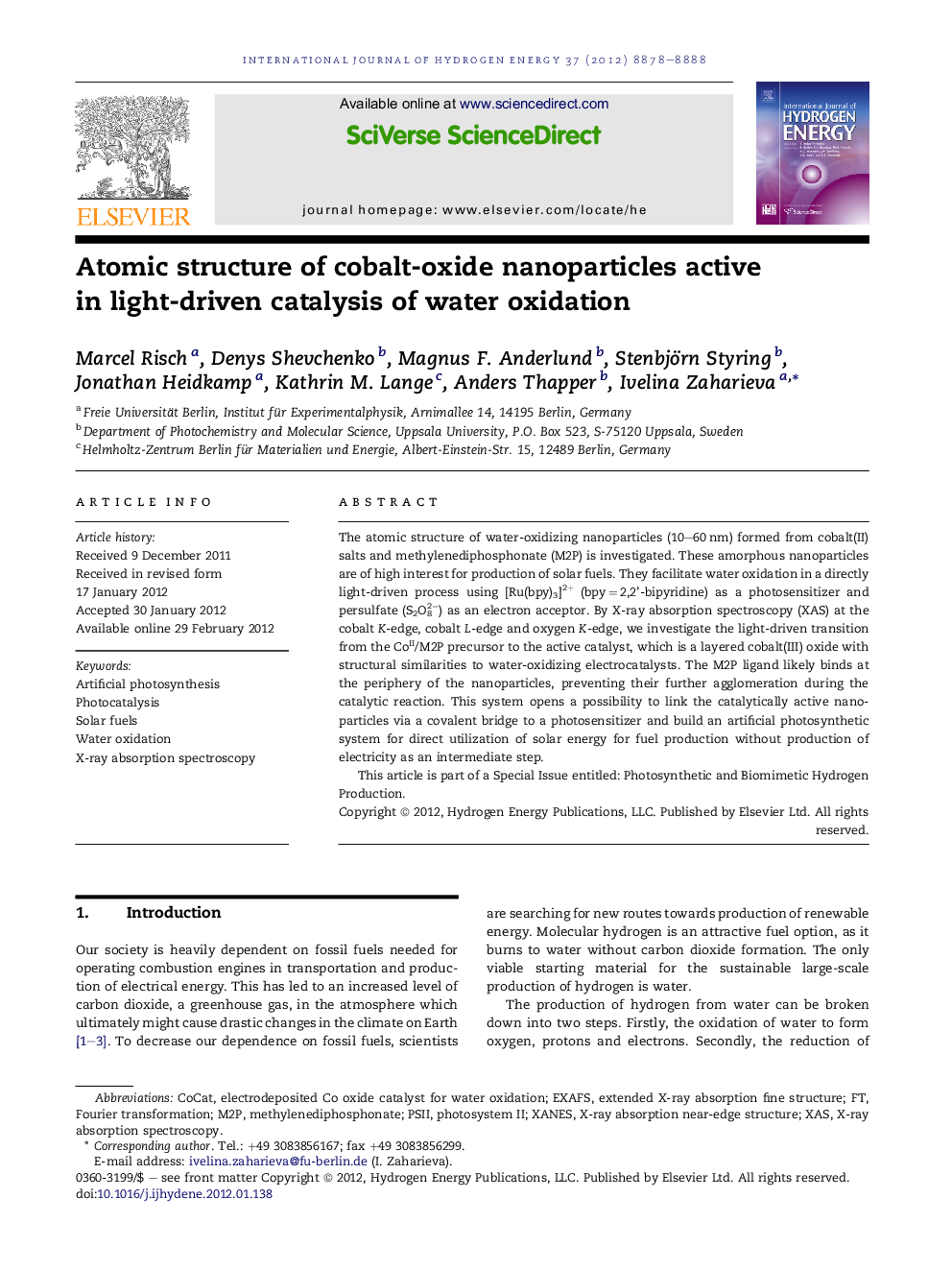| Article ID | Journal | Published Year | Pages | File Type |
|---|---|---|---|---|
| 1275391 | International Journal of Hydrogen Energy | 2012 | 11 Pages |
The atomic structure of water-oxidizing nanoparticles (10–60 nm) formed from cobalt(II) salts and methylenediphosphonate (M2P) is investigated. These amorphous nanoparticles are of high interest for production of solar fuels. They facilitate water oxidation in a directly light-driven process using [Ru(bpy)3]2+ (bpy = 2,2’-bipyridine) as a photosensitizer and persulfate (S2O82−) as an electron acceptor. By X-ray absorption spectroscopy (XAS) at the cobalt K-edge, cobalt L-edge and oxygen K-edge, we investigate the light-driven transition from the CoII/M2P precursor to the active catalyst, which is a layered cobalt(III) oxide with structural similarities to water-oxidizing electrocatalysts. The M2P ligand likely binds at the periphery of the nanoparticles, preventing their further agglomeration during the catalytic reaction. This system opens a possibility to link the catalytically active nanoparticles via a covalent bridge to a photosensitizer and build an artificial photosynthetic system for direct utilization of solar energy for fuel production without production of electricity as an intermediate step.This article is part of a Special Issue entitled: Photosynthetic and Biomimetic Hydrogen Production.
Graphical abstractFigure optionsDownload full-size imageDownload as PowerPoint slideHighlights► Atomic structure of water-oxidizing Co oxide/methylenediphosphonate nanoparticles by X-ray absorption spectroscopy. ► Methylenediphosphonate prevents particle agglomeration during the catalytic reaction. ► Water is oxidized and oxygen is produced in a process directly driven by light. ► System shows prospects for direct linking of a photosensitizer.
